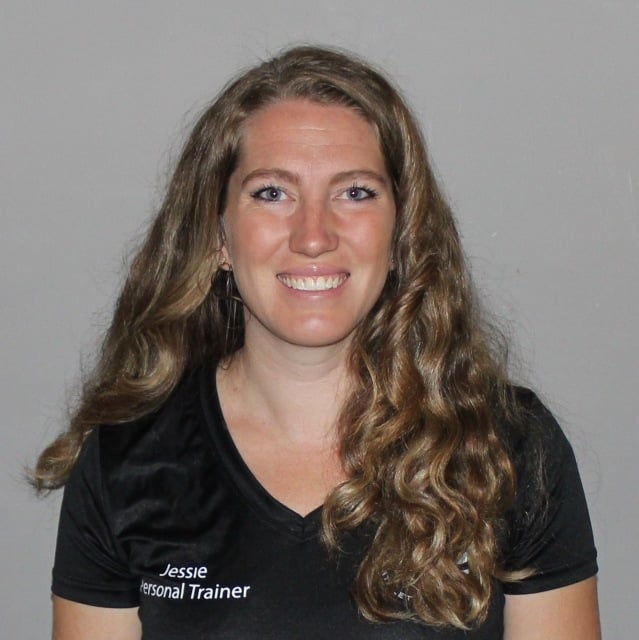Good Posture: Is It Worth Your Time?
Posted by Jessie Mostert on November 22, 2024
At some point you may remember hearing a well-meaning family member remind you to “sit up straight” or “stand up tall”. Or maybe you've had a conversation with a friend or coworker who said they were “working on their posture”. Trying to have good posture is a common sentiment, but what are the actual benefits of proper posture and are they worth trying to change the very ingrained habits of how we sit, stand and move?
As it turns out, improving posture can have quite a few positive outcomes on the health of an individual. Benefits range from a decrease in tension headaches to improved confidence. This blog is intended to help you to understand more about the importance of posture and give you some tips on how to improve some common postural issues.
Good Posture vs. Poor Posture
The posture we should strive for includes maintaining the natural curves of the spine all while having the head, shoulders and hips stacked upon each other. This proper body alignment reduces strain on muscles and ligaments as well as allows for freedom of movement through each joint.
On the flip side, poor posture can lead to some muscles being overworked, while other muscles are weak because they are placed out of alignment to perform their function properly. Improving posture can help even out muscle imbalances and the problems that come with them.

Upper Crossed Syndrome
One common postural compensation is known as ‘forward head’ or ‘upper crossed syndrome’ where the neck and head lean out of alignment with the spine and shoulders and the shoulders in turn are rounded or hunched forward.
In this posture, the upper shoulders and chest are tight and overactive while the neck and upper back muscles are weak and underactive. These imbalances can cause pain to be referred to other parts of the body impacted by the strain of improper alignment. In a 2020 study it was found “that patients with chronic primary headache present greater forward head posture than asymptomatic individuals”.1 Tension headaches, jaw pain and neck stiffness are a few examples of the referred pain that can come with upper crossed syndrome.
Unfortunately, this postural condition is only on the rise because most of us find ourselves in a forward head/rounded upper back position while scrolling on our phones or working at our desks, oftentimes without even realizing it. Luckily, there is some upside and chance to correct our posture trajectory. A recent study found that using self-exercise to improve posture could in turn lead to less forward head posture.2 We will talk about a few exercises and stretches that you could include if you plan to pursue a posture self-exercise regimen of your own. 
Lower Crossed Syndrome
Another bothersome postural compensation is known as lower crossed syndrome. This syndrome includes weak glute muscles and core paired with tight hip flexor and back stabilizer muscles. Lower crossed syndrome is also on the rise because of the increase in sitting for long periods of time, paired with less general movement in our days.
When we sit, our hip flexors are in a shortened (tight) position and our glutes, which are designed to be one of our primary muscle movers are ‘turned off’ so to speak. And unfortunately, they don't just turn on again when we get up to walk. Our gait is still impacted by the tight hip flexors and back.
Lower crossed syndrome can cause mobility issues in many movements you might perform in the gym or at home such as squatting. It can also lead to back pain, hip pain, lack of functionality and the disengagement of core muscles throughout movement.
What You Can Do
Now that we've discussed two common postural ailments, what do we do about them? Fortunately, the things that make a big difference in posture are quite simple to perform. The trick is to make them a habit and include them in our daily routines. Below are a few exercises and stretches for each posture compensation to get you started.
For Upper Crossed Syndrome:
- Use a doorway to stretch your chest muscles by placing your arm at a 90-degree angle with your forearm along the door opening. Gently lean into the stretch.
- Lay on the ground on your back with your arms at a 90-degree angle in a goal post position. Try to relax as both your elbows rest on the ground. Gently tuck your chin to complete the stretch
- Perform Bruegger's pose while spending prolonged periods of time doing activities that could promote a hunched over posture. This is done by sitting up straight, extending arms out with palms turned upwards. Focus on pulling your scapulae together. Gently tuck your chin. Hold for 20 or more seconds while breathing deeply.
- Perform "wall angels". Stand with your back against the wall. Start with the arms in goal post position, back of hands against the wall. Slowly extend arms above the head until hands meet in the middle, maintaining contact with the wall. Then slowly return to the starting position. This can also be performed without a wall, but to use a wall is preferred.
For Lower Crossed Syndrome:
- One of the best ways to stretch the hip flexors is through increasing time moving and decreasing time sitting. Standing desks and walking breaks can be helpful here
- Placing one foot in front of the other in a lunged position, gently bend both knees. Tuck your tailbone in and you should feel a stretch through the hip flexor of the back leg
- Glute bridges do wonders to help activate glute muscles. Lay on your back with feet hip width apart. Gently press through your heels to press back and glutes off the floor while your shoulders maintain contact. Strive to keep core, hips and knees aligned creating a straight sloping line. Hold for a few seconds and lower back down.
- Practice cat/cow stretch for spinal mobility and flexibility. Start on hand and knees in a quadruped position. Drop your back, letting your belly go toward the floor and lifting your head and tailbone. Then, round your spine and tuck your chin into your chest. Press through both your hands and knees
The process of improving your posture can seem daunting at first, as can many lifestyle shifts. But as you choose to implement small changes and become more aware of your postural habits the changes can be monumental for your body’s function. Beyond purely physical benefits it has also been shown that posture has an impact how we perceive and are perceived by others, shaping how we interact with our world and forming part of our self-image.3 Unsurprisingly, having upright posture can bolster confidence as well as benefiting us physically.4
With benefits extending into many aspects of health, posture is a cornerstone of mobility and strength. Becoming aware of the ways in which we carry our bodies is well worth our time and attention.
REFERENCES
- Jaroenrungsup, Y., Kanchanomai, S., & Khruakhorn, S. (2021). Effects of self-posture correction exercise in forward head posture of smartphone users. Songklanakarin Journal of Science & Technology, 43(2).
- Elizagaray-Garcia, I., Beltran-Alacreu, H., Angulo-Diaz, S., Garrigos-Pedron, M., & Gil-Martinez, A. (2020). Chronic primary headache subjects have greater forward head posture than asymptomatic and episodic primary headache sufferers: systematic review and meta-analysis. Pain medicine, 21(10), 2465-2480.
- Fodoreanu, F. M. (2016). Body posture and motivation: How they relate to anxiety, self-regulation, and self-efficacy among young adults. Alliant International University
- Veenstra, L., Schneider, I. K., & Koole, S. L. (2017). Embodied mood regulation: the impact of body posture on mood recovery, negative thoughts, and mood-congruent recall. Cognition and Emotion, 31(7), 1361-1376.

Jessie Mostert
Jessie Mostert is originally from Temecula, CA and moved to Rochester in 2022 while her husband is a resident physician at the Mayo Clinic. Jessie has a bachelor's degree in Exercise and Wellness as well as her NASM personal training certification. She loves running and competed as a Division 1 Track and Field and Cross Country athlete during her college days. Most of the time you can find Jessie chasing sunshine and the outdoors with her kids in tow.
Contact Jessie Mostert



